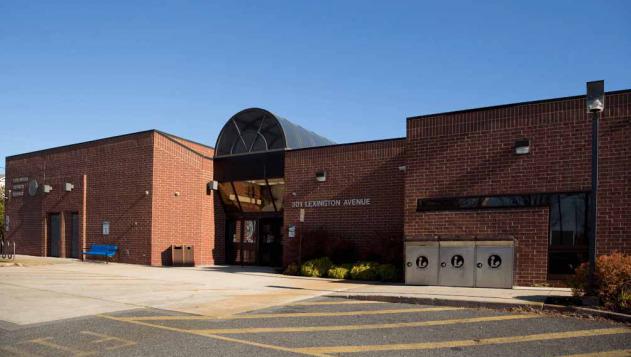The earliest inhabitants of Lakewood were the Lenni-Lenape Native Americans, but by the end of the 18th century they had been “resettled” on reservations in Burlington County. The first European settlers were probably sawmill operators and somewhat later, farmers. As early as 1815, a furnace was constructed for producing iron. With the formation of the Bergen Iron Works by one of the more important men in Lakewood’s history, Joseph W. Brick (Brick Township was named for him and originally included all of Lakewood), the community continued to grow as a center for iron production. By 1844, the town had been named Bergen Iron Works, a name which persisted until 1866, when the Brick heirs deciding to emphasize use of the land for farming rather than iron production, renamed it Bricksburg.
By the end of the nineteenth century the economy of Bricksburg had changed (as had its name in 1880 to Lakewood), reflecting a desire to recreate the town in a new image as a resort community, an identity it retained for much of the early to mid-twentieth century. During its heyday, exclusive Lakewood hotels such as The Laurel House, the Lakewood Hotel, and the Laurel-in-the-Pines played host to the wealthy and fashionable from New York. John D. Rockefeller and George Jay Gould also located sumptuous estates here.
The post-World War II period once more witnessed a significant change in the Lakewood economy as cheap, rapid air transportation shifted the vacationing habits of Americans from such close-to-home resorts such as Lakewood to the more salubrious climates of Florida and the Caribbean. The resort hotels that once dotted Township streets quickly became little more than a distant memory.
As Lakewood’s economic base as a resort center eroded, the economy of the area shifted first to chicken farming and later to light industry, and Lakewood developed one of the largest industrial parks in the state. During the latter part of the twentieth century, the entire Ocean County area, including Lakewood, has seen a growth of the area as a center for retirement living. In Lakewood, a substantial number of living units have been constructed in the Route 70 area. Of crucial importance (certainly to our Lakewood Branch Library) is the fact that the prime shopping and service area for this fast developing section of Lakewood Township is located outside of the downtown community, largely in Brick Township. This leaves the Lakewood downtown area without much of its potential commercial base. It also leaves the Lakewood Branch Library without the patronage of much of the retirement community population of the Township, which will most likely use the more convenient Brick Township Branch Library.
Since 2000, the Latino immigrant and Orthodox Jewish population has continued to grow. This is reflected by continuous new construction of homes, private schools, and businesses throughout the Township and the arrival of many stores and businesses in the downtown area serving an extremely diverse customer base. According to population figures from the 2010 census, Lakewood grew from the 22nd largest municipality in NJ to the 7th largest and increased its population by 49% from 2000. It has the largest birth rate in NJ, mostly due to the large families of Orthodox Jewish people who have settled in Lakewood (approx. 60% of the population).



